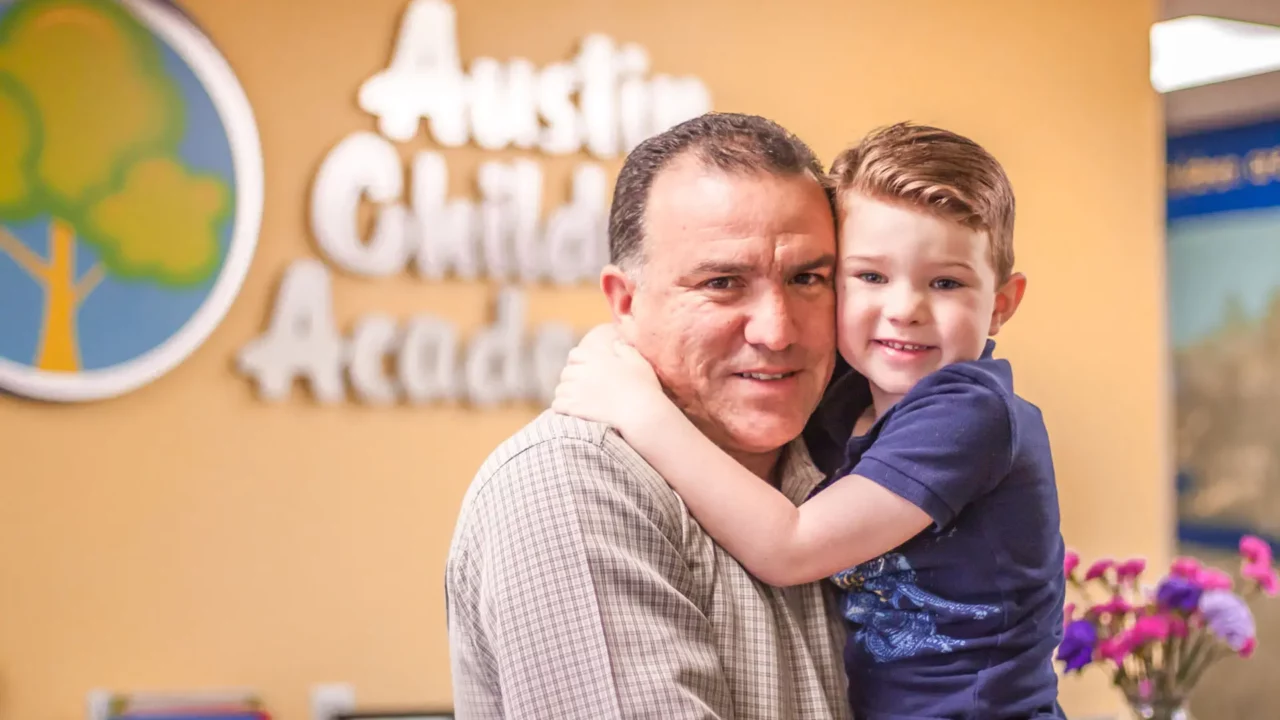
If your child isn’t sleeping, then everyone in the house is awake. As a parent, you expect a certain level of sleep deprivation while taking care of a hungry infant, but wasn’t that supposed to end at your child’s first birthday? You’re probably wondering why your toddler or preschooler is still getting up once, twice, even three times a night.
One thing is for sure: When sleeplessness becomes chronic, real problems arise, and not just for the weary parent. While your head is bobbing over your third cup of coffee, your exhausted child is in preschool struggling to focus and not get cranky.
Sleep Is Serious Stuff
On average, preschoolers need about a dozen hours of sleep a day and toddlers need a few hours more. Those stretches of domestic peace aren’t just for mommy and daddy to get the housework done, or maybe even watch an episode of their favorite TV-MA series. Little bodies and brains need quality sleep in order to function optimally both physically and mentally.
Sleep is nature’s night manager/janitor. During slumber, biochemical processes occur in the brain to recharge the cells, clear away waste, sort and strengthen memories, as well as regulate mood, appetite, and learning capacity. A large-scale study of 35,000 school-age children revealed that sleep deprivation not only impaired academic performance but was also the likely source of many behavior problems in the classroom. A lack of sleep can contribute to slower reaction times, focus issues, and accidents. Other studies have linked early sleep problems to obesity, diabetes, as well as to ADHD. Most sobering is a study published last year in the Journal of Developmental & Behavioral Pediatrics, showing that toddlers with chronic sleep disorders have a higher incidence of psychiatric disorders later in life.
Sleep solutions are not just a good idea, they’re vital.
Signs Of Sleep Problems
If junior has a tendency to wake up at 3 a.m. to fly his plastic pterodactyl into a teetering pile of blocks, you can pretty much check the box that your son might be suffering from a form of insomnia. But even if you aren’t jarred out of a deep sleep in the wee hours of the morning, your child may still struggle with sleep problems if he or she exhibits multiples of the following behaviors:
• Habitual snoring
• Sleep apnea, or pauses in respiration that may resume with a startling, sudden intake of breath
• Taking forever to fall asleep at bedtime
• Waking up multiple times during the night, or sleepwalking
• Daytime crankiness, moodiness, or tantrums
• Dozing off during non-nap times, or general daytime drowsiness
• Clumsiness that seems to be associated with focus or attention problems
Every toddler and preschooler will have periods of time when their sleep is interrupted, but if you’re struggling with long-term, persistent sleep issues, and you’re seeing its effects on his behavior and performance in preschool, it’s time to investigate causes and solutions.
Physical Or Physiological?
Have you checked out his bedroom recently? Is his bed comfortable or is it time to swap out that squeaky toddler mattress? Is his room warm enough in the cold season and cool enough in the summer? Does a neighbor’s outdoor light shine in through the window at night? Does the morning sun wake him long before his alarm? Perhaps light-blocking shades, a new comforter, or bedroom fan will help solve the problem.
There’s also a possibility of a physiological issue. A child’s light snoring may seem cute, but snoring is a sign of a narrowed airway. Some kids only snore during allergy season, when inflamed sinus tissues cause the problem. Other children snore due to a deviated septum, large tonsils, or large adenoids.
Though snoring may only seem to irritate the people who have to listen to it, it can also interrupt the snorer’s sleep to the point of cheating the child out of the deeper restorative REM cycles. Snoring may also indicate potential sleep apnea, which is when breathing pauses for a period of time because of obstruction. When breathing surges back, it can jolt the sleeper out of his REM cycle.
If you suspect that it’s a physical problem causing sleep dysfunction, consider contacting a pediatric ear, nose, and throat doctor.
Promoting Positive Patterns
Childhood habits tend to stretch into adulthood. That’s why every parent encourages habits that are positive, like healthy eating and plenty of exercise. Developing a consistent bedtime routine is a healthy habit that may help conquer a sleep dysfunction that isn’t a matter of physiology. Sleep routines regulate the body system called sleep/wake homeostasis which tells us when our bodies have been awake long enough and it’s time for beddy-bye.
Conventional wisdom includes these best practices:
• Set a regular bedtime for your child and stick to it
• Disconnect from TV, computers, and any blue-light screens at least an hour before bedtime
• Avoid anything with caffeine, such as chocolate, for 4-6 hours before bedtime
• Develop a consistent routine, such as a bath, a book, a lullaby, and then bed
• Keep the house quiet if possible. If not, consider using white noise like a fan or a white noise machine
• Respect the mind’s natural alert-reaction to light by keeping the room dim, with just a small nightlight if necessary
Eliminate Enabling
As a working parent, you probably rolled your eyes at the conventional wisdom listed above. It isn’t easy to maintain routines when your family schedule resembles the increasing chaos of the universe. And if your child gets tired at 7:30 p.m. but you don’t arrive home until 8 p.m., conventional wisdom means you’d have to give up that precious bedtime chat.
Also, how can a harried parent resist when a preschooler wanders in at 2 a.m. wanting to snuggle up in the big bed between mom and dad? How can a parent resist jumping out of bed to attend a preschooler who is roaming around the house? Isn’t it just easier to sit on the bed beside your restless son, singing him a lullaby until he dozes off? If you resist, he’ll start screaming and the whole family’s sleep will be interrupted.
Occasional soothing is fine, but if the sleep interruptions persist over the long term, your child may have developed a need for parental sleep-soothing in order to fall into slumber. The uncomfortable truth is that these comfort-methods are a crutch preventing your child from learning how to put himself to sleep. Weaning your children from midnight comfort-seeking won’t be easy, but it will help both of you now, as well as for a lifetime.
Not So Tough Love
You’re undoubtedly familiar with the term ‘Ferberizing.’ The Ferber Method is a technique of solving baby sleep problems involving allowing the child to ‘cry it out’ for a short interval, then offering comfort, and then leaving for increasingly longer intervals. It’s an effective method if somewhat traumatizing for the parent.
Your child is older now, but the philosophy behind the method still holds. The difference is that your child has a lot more clever tools in her sing-me-to-sleep arsenal. Check out these solutions to wean your child from the parent-sleep-soothing crutch:
• But There Are Monsters Under The Bed! With the rise of an active imagination comes a fear of the creatures of that imagination. When faced with this complaint, consider the source: Has she been watching scary TV shows? Playing tense video games? Perhaps it’s time to put a kibosh on that until she has a better grasp of the difference between reality and fantasy. Treat her fear as real, however, and consider these other tips on mashing the monsters.
• Another Book, Another Bathroom Break, Another Song. Someone is resisting sleep, whether because he’s overtired or because he just wants a few more minutes with daddy. Before this goes on for an hour or more, grant him either one, two, or three ‘extras’ a night, and then be done with the ritual.
• Don’t Leave! A child accustomed to having you in the room while they fall asleep may no longer be able to fall asleep without your loving back rub, songs, or presence. Wean him off by limiting the songs, the length of the back rub, and the time you spend in the room. Eventually, you’ll be able to kiss him good-night and then leave.
• Night Crawler. Sleep comes in cycles, and periods of wakefulness every 100 minutes or so are part of the natural process. A toddler or a preschooler doesn’t yet know that he should just close his eyes and succumb to the next cycle. If he finds himself awake, he’ll go looking for mom and dad, especially if he’s addicted to parental sleep-soothing. If this activity is causing you sleep deprivation, the best advice is to take care of his physical needs—is he sick? Did he wake up because of a full bladder?—and then send him firmly back to his own bed. Over and over, if necessary, until he learns to soothe himself.
As a parent, you know that patience and consistency are the key to mitigating almost any childhood behavioral issue. When the nights get tough, just remember that your children may be crying now, but they will reap the health benefits of a good night’s sleep long after they stop letting you kiss them goodnight.






